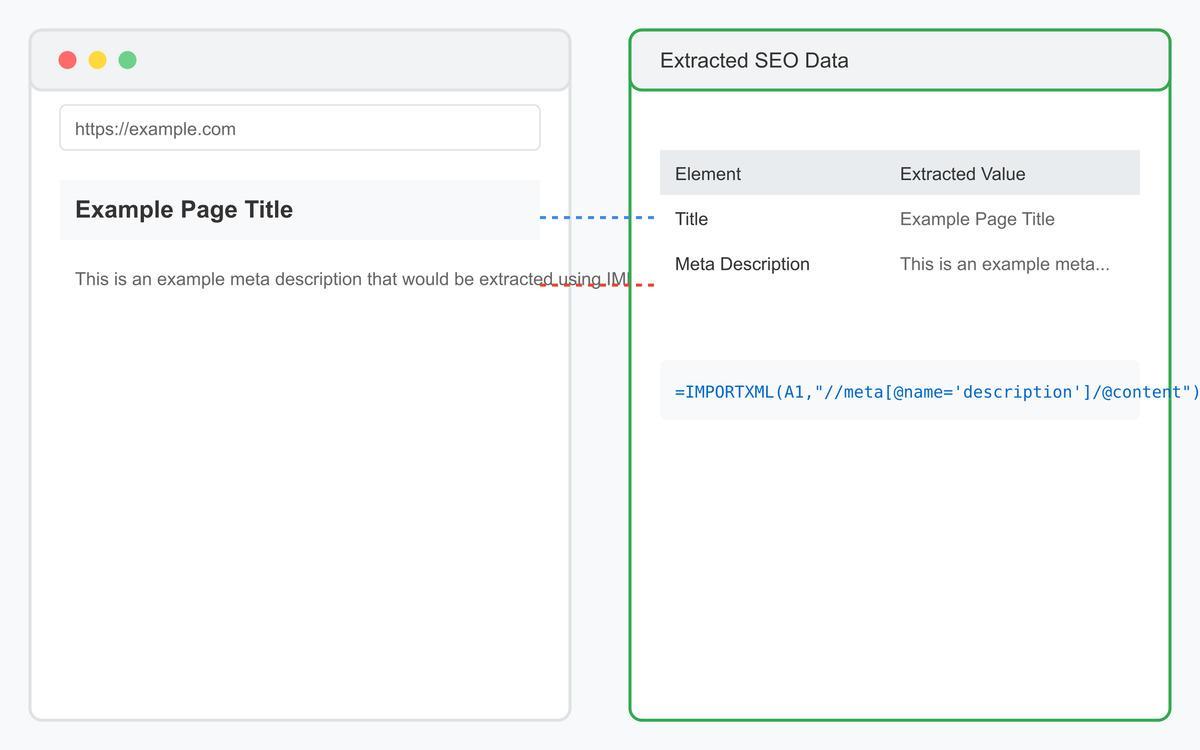The art of executing a successful golf swing involves a deep understanding of the biomechanics that dictate how a golfer interacts with the ball. This knowledge is essential for players at all skill levels who aim to enhance thier performance on the course. This article delves into the critical elements of grip, stance, and dynamic movement, offering a comprehensive analysis designed to improve consistency and accuracy in ball striking. By utilizing kinematic analysis, we will investigate how minor adjustments in swing mechanics can lead to better results, laying the groundwork for skill enhancement in golf. Our goal is to provide golfers with the insights needed to refine their techniques, ultimately leading to a more effective and enjoyable playing experience.
Understanding the Biomechanical Foundations of Golf Swing Techniques
The mechanics of a successful golf swing can be broken down into various biomechanical principles that are fundamental to a golfer’s performance. A key concept is **kinetic energy transfer**, which explains how the body’s movements contribute to clubhead speed and precision. Crucial components include:
- Ground Reaction Forces: The connection between a golfer’s feet and the ground is vital for stability and power. Effective footwork facilitates the transfer of energy from the ground through the body and into the club.
- Sequential Movement patterns: An effective swing follows a sequence that starts from the lower body and moves to the upper body. For example, beginning the downswing with the hips ensures optimal timing and acceleration of the arms and club.
- Torque and angular Motion: The rotation of the torso generates torque, which is crucial for achieving clubhead speed. By engaging both the upper and lower body, golfers can enhance the efficiency of their swings.
Another critical aspect of swing mechanics is **postural alignment**,which directly impacts balance and the stability of the swing plane. A golfer’s posture should maintain a neutral spine, with a slight bend at the hips and knees. This alignment allows for effective weight transfer throughout the swing and supports a repeatable motion. Key characteristics of posture include:
- Foot Position: Feet should be shoulder-width apart to create a stable base, allowing the upper body to maintain proper alignment during the swing.
- Spine Angle: Keeping a consistent spine angle is essential for delivering the clubhead along the intended swing path.
- Shoulder Alignment: Shoulders should be parallel to the target line at address to encourage a straight,controlled swing.
Incorporating **specific training techniques** can significantly enhance a golfer’s swing mechanics. Understanding individual strengths and weaknesses allows for targeted practice routines. Exercises aimed at improving versatility, core strength, and coordination can lead to substantial gains. Effective strategies include:
| Exercise Type | Benefits |
|---|---|
| Dynamic stretching | Increases flexibility and prepares muscles for swinging motions. |
| Core Stability Drills | Enhances balance and control during the swing. |
| Rotational Exercises | Boosts trunk rotation, resulting in more powerful swings. |
Essential Elements of Swing Mechanics and Their Influence on Shot Quality
The complexities of swing mechanics are crucial in determining the quality of each golf shot. Ben Hogan emphasized the **importance of proper sequencing** during the swing to ensure that all body parts work in unison. Each phase of the swing—from the takeaway to the follow-through—must be executed with precision. Key components include:
- The Backswing: A complete and controlled shoulder turn that sets the foundation for an effective downswing.
- The Transition: The pivotal moment where energy shifts from the backswing to the downswing, requiring timing and coordination.
- The Follow-Through: A smooth finish that reflects balance and rhythm, indicating a well-executed shot.
Hogan’s teachings also highlight **the importance of grip and stance**. The way a golfer grips the club affects not only the ball’s trajectory but also the ability to control spin and distance. A proper grip allows for maximum clubface control at impact. Additionally, stance plays a vital role in stabilizing the body throughout the swing. Consider the following elements when evaluating grip and stance:
- Grip Pressure: Should be firm yet relaxed to facilitate fluid movement.
- Stance Width: Wider stances enhance stability,while narrower stances allow for greater freedom of movement.
- Alignment: Proper alignment to the target ensures an optimal swing path.
The **alignment of the body** to the target is crucial for achieving desired shot outcomes. Hogan’s analysis provides a framework for ensuring that the feet,hips,and shoulders are correctly oriented,significantly influencing shot direction. utilizing a consistent pre-shot routine that includes checking alignment can greatly enhance shot accuracy. The alignment factors encompass:
| Alignment Factor | Impact on Shot |
|---|---|
| Foot Alignment | Affects balance and power transfer during the swing. |
| Shoulder Alignment | Guides the swing path toward the target. |
| Hip Alignment | Influences the angle of the swing, impacting ball trajectory. |
Leveraging Data Analytics for Swing Performance Assessment
The integration of data analytics in golf is transforming how swing performance is evaluated. By utilizing advanced technologies such as motion capture and launch monitors,golfers can analyze their swings with remarkable precision. These tools provide a wealth of data, enabling players to dissect various elements contributing to their swing mechanics:
- Clubhead Speed: Measuring the velocity of the clubhead at impact to generate maximum power.
- Angle of Attack: Evaluating the upward or downward motion of the club during impact.
- Ball Speed: Assessing the speed of the ball after impact to gauge energy transfer.
- Spin Rate: Understanding the amount of backspin or sidespin imparted on the ball for trajectory control.
Statistical models can then be applied to this data, allowing players and coaches to identify patterns and correlations between various swing variables. As a notable example, a golfer might discover that a slight adjustment in their angle of attack can lead to meaningful improvements in ball speed and distance. Historically, such insights were gained through trial and error; however, the analytical approach provides a systematic pathway for performance enhancement. The following table summarizes key swing metrics and their meaning:
| Metric | Significance |
|---|---|
| Clubhead Speed | Directly impacts distance and power |
| Angle of Attack | Affects trajectory and spin |
| ball Speed | Key indicator of energy transfer effectiveness |
| Spin rate | Influences control and shot shape |
With insights gained from data analysis, golfers can create tailored practice regimens that address specific weaknesses in their swings.This targeted approach not only increases the efficacy of practice sessions but also fosters a deeper understanding of one’s unique swing mechanics. By continuously monitoring and adjusting these metrics, golfers can achieve a higher level of consistency and performance on the course, ultimately leading to improved scores and an enhanced overall playing experience.
Focused Training Strategies for Enhancing Swing Efficiency
To improve swing efficiency, focused training strategies should target specific components of swing mechanics. **Drill-based practices** can help solidify muscle memory and refine the golfer’s technique. Incorporating exercises that emphasize **core stability**, **shoulder rotation**, and **wrist hinge** can significantly enhance the overall efficiency of the golf swing. Recommended practice drills include:
- Alignment drills using alignment sticks to reinforce proper stance
- Core strengthening exercises like planks and medicine ball rotations
- Flexibility routines focusing on shoulders and hips to promote a full range of motion
A comprehensive approach should also integrate **video analysis** and **motion capture technology** to assess swing mechanics in real-time. By capturing and analyzing swing data, golfers can identify areas for improvement, evaluating key metrics such as **clubhead speed**, **face angle**, and **swing path**. The following table summarizes essential metrics for effective swing optimization:
| Metric | Ideal Range | Impact on Swing |
|---|---|---|
| Clubhead Speed | 90-120 mph | Directly correlates to distance |
| Face Angle | 0° (square) | Influences ball alignment and spin |
| Swing Path | Inside-to-out for fades, outside-to-in for draws | Affects ball trajectory and accuracy |
Incorporating **mental visualization techniques** can further enhance swing performance by reinforcing the physical movements required for an effective swing. Practicing visualization of perfect swings aids in developing a stronger connection between mind and body, leading to improved consistency. These methodologies, when combined, create a holistic training regime focused on optimizing swing performance and efficiency.By implementing a systematic approach, golfers can expect marked improvements in their overall game.
Incorporating Technology in Swing Analysis for Ongoing Improvement
Integrating technology into swing analysis has transformed how golfers can enhance their game. High-speed cameras, motion capture systems, and swing analyzers provide critical data that was once difficult to obtain. This technological approach enables players to pinpoint specific flaws in their mechanics, such as grip pressure, angle of attack, and hip rotation. By leveraging this data, golfers can make informed decisions about the adjustments to implement in their practice routines, thereby elevating their performance on the course.
Modern swing analysis tools can capture detailed metrics that facilitate targeted training. These metrics typically include:
- Club Path: Understanding whether a swing is inside-out or outside-in helps in making necessary adjustments.
- Face Angle at Impact: This determines the initial direction of the ball, critical for controlling shots.
- Club Speed: Measuring this can assist in improving distance without sacrificing accuracy.
Using these insights, golfers can tailor their practice sessions based on specific data trends, which can lead to accelerated improvement. Furthermore, applications that provide video feedback allow for a seamless comparison between different swings, enabling players to visualize their progress and refine their techniques in real-time.
To illustrate the impact of technology on swing performance, consider the following comparison table that summarizes conventional versus modern swing analysis methods:
| Aspect | Traditional Method | Modern Method |
|---|---|---|
| Feedback speed | delayed feedback, often after multiple rounds | Instantaneous analysis |
| Data Depth | subjective evaluations | Quantifiable metrics and visual representation |
| Adjustment scope | Largely reliant on instructor | Self-directed learning with video applications |
As technology continues to advance, the availability of refined tools will only increase, offering golfers unprecedented opportunities for continuous improvement. embracing these innovations not only enhances understanding but also makes the pathway to mastering one’s swing more accessible and efficient.
### Conclusion
the examination of the mechanics and techniques that underpin effective golf swings provides invaluable insights into the intricate relationship between physical biomechanics and skillful performance. The exploration of various elements, such as grip, posture, swing dynamics, and timing, underscores the necessity for a holistic approach to golf instruction. As demonstrated through exemplary cases, including that of Jordan Spieth, mastering these components can lead to not only enhanced performance but also greater consistency on the course.
Furthermore, the findings reinforce the significance of individualized training regimens tailored to players’ unique physical attributes and cognitive strategies.By fostering a deeper understanding of these mechanics,coaches and aspiring golfers alike can cultivate a more effective practice regimen,ultimately unlocking the potential for success in the competitive realm of golf. Moving forward,continued research and analysis in this field will be essential in further advancing techniques and enhancing the overall quality of play in golf.

## Meta Title
unlocking the Secrets of a Perfect Golf Swing: Mechanics and Techniques for Success
## Meta Description
Discover the key mechanics and techniques for achieving the perfect golf swing. Enhance your game with expert tips on grip,stance,timing,and more!
## Understanding the Basics of a Golf Swing
The golf swing is a complex sequence of movements that requires precision and coordination. Each component is vital for achieving optimal performance:
### 1.The Grip
– **Types of Grips**:
– **Interlocking Grip**: Provides stability and is popular among professionals.
– **Overlapping Grip**: Most common among amateurs, offers comfort and control.
– **Baseball Grip**: Great for beginners, helps in understanding the mechanics.
**Key Considerations**:
- your grip pressure should be firm but not too tight to allow for fluid motion.
– Adjust your grip based on club type and personal comfort.
### 2. Stance and Alignment
– **Feet Position**: Your feet should be shoulder-width apart for a stable base.
– **Body Alignment**: Should be parallel to your target line.
**Tips**:
– Use alignment sticks during practice to ensure accurate stance.
– Adjust your stance for different clubs; wider for drivers, narrower for short irons.
## Mechanics of the Golf Swing
Understanding the mechanics is crucial for a consistent swing.
### 3. The Takeaway
– Initiate your swing by moving your hands and arms away from the ball.
– Keep the clubhead low to the ground during the first part of your swing.
### 4. The Backswing
– Rotate your shoulders while maintaining a stable lower body.
- Aim to create a triangle between your arms and body.
**Drills**:
– Practice the one-piece takeaway by connecting your shoulders,arms,and club as a single unit.
### 5. The Downswing
– Begin your downswing with your lower body; this will help generate more power.
- Ensure your hands follow the correct path for effective clubface control.
## Timing and Tempo
### 6. Importance of Rhythm
A consistent rhythm is essential for a triumphant golf swing.
– **Drills for Timing**:
– Count as you swing: Try a “one-two” rhythm to synchronize upper and lower body movements.
– Use a metronome or music with a steady beat to establish your tempo.
### 7.Practicing with Purpose
Focus on specific aspects of your swing during practice to make important improvements.
– **Swing Checkpoints**: Use video recordings to analyze your swing at various checkpoints.
## Advanced Techniques and Tips
### 8. The Follow-Through
- A complete and balanced follow-through reflects the effectiveness of your swing.
– Ensure that your body finishes facing the target.
### 9. Power Generation
– **Core Strength**: Engage your core for enhanced stability and power.
– **Leg Drive**: Use your legs to push off for added distance.
**Core Exercises**: Squats, lunges, and rotation exercises can improve overall strength.
### 10. Equipment Optimization
– **Club Fitting**: Ensure your clubs are suited to your height, swing speed, and skill level.
– **Ball Selection**: Choose golf balls based on your playing style; spin control for short games vs. distance for drives.
## Benefits of Mastering Your Swing Mechanics
– **Consistency**: A refined swing leads to more predictable shots.
– **Improved Distance**: enhanced technique directly translates to longer drives.
– **Lower Scores**: Better mechanics can lead to fewer strokes on the scorecard.
## Common Mistakes to Avoid
### 11. Overthinking Your Swing
– **Stay Relaxed**: Removing tension allows for a smoother swing.
- **Visualize Each Shot**: Picture the outcome before you swing.
### 12. Neglecting Physical Fitness
A strong physical foundation supports better swing mechanics.
– **Flexibility and Strength**: Incorporate stretching and strength training into your routine.
## first-Hand Experience: Lessons from Pros
Professional golfers often emphasize the importance of repetitive practice and focused training. here’s what some say:
– **Tiger Woods**: Advocates for a strong foundation and the importance of grip.
– **phil Mickelson**: stresses the need for a fluid swing and mental visualization.
## Case Studies
### 13. Analyzing Famous Golf Swings
| Golfer | Key Technique | Notable Aspect |
|——————|—————————————|—————————————————–|
| Jack Nicklaus | Powerful Leg Drive | Known for exceptional balance and follow-through. |
| Rory McIlroy | Fluid Rhythm | Combines power and elegance in his swing. |
| Annika Sörenstam | Consistency in Grip and Stance | Exceptional short game influenced by solid fundamentals.|
## Final Thoughts
Mastering the mechanics and techniques of a perfect golf swing requires dedication and constant adjustment. integrate these principles into your practice and remain open to feedback for continuous improvement.
Explore and refine each aspect of your swing to unlock your full potential!





